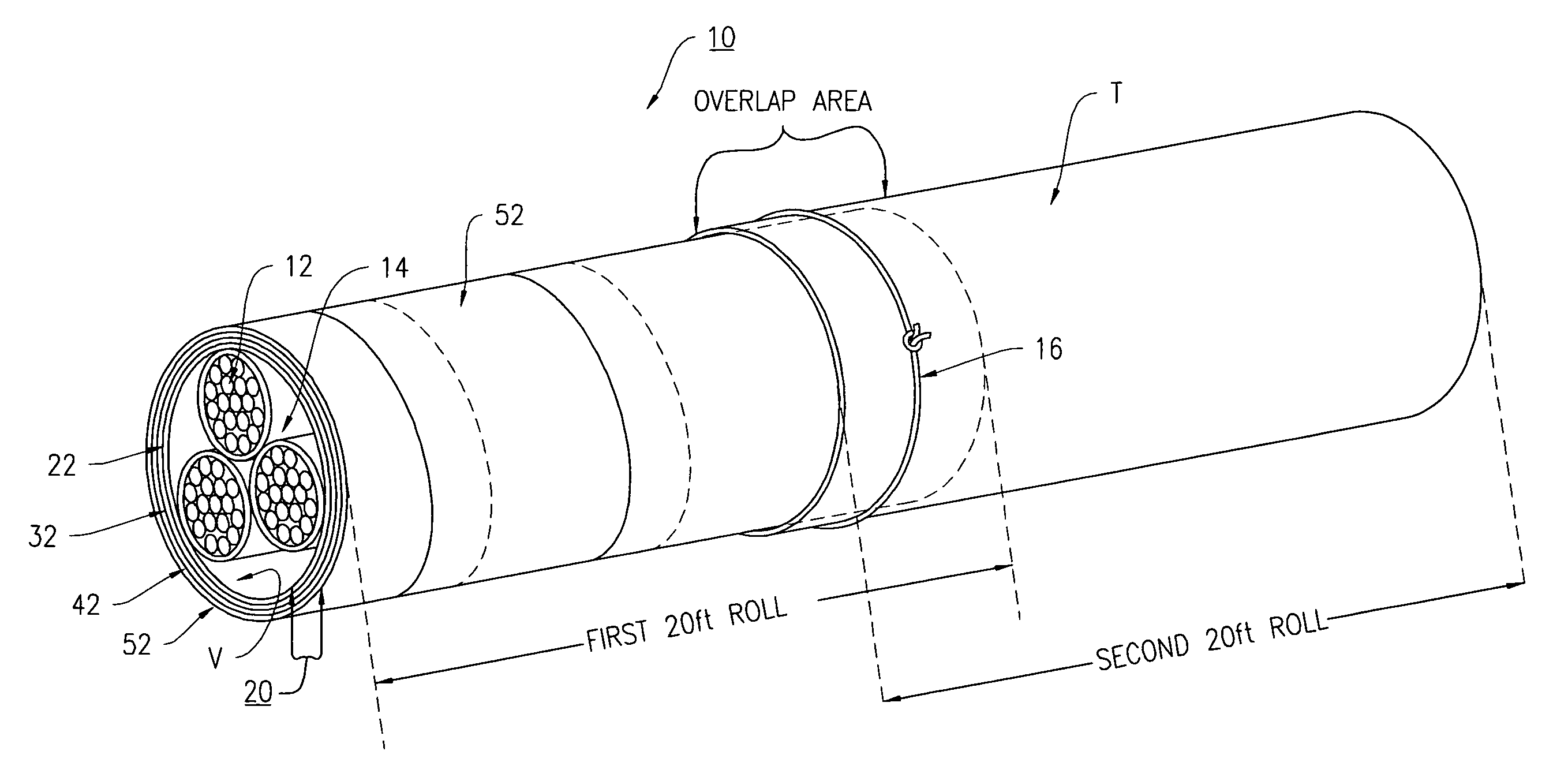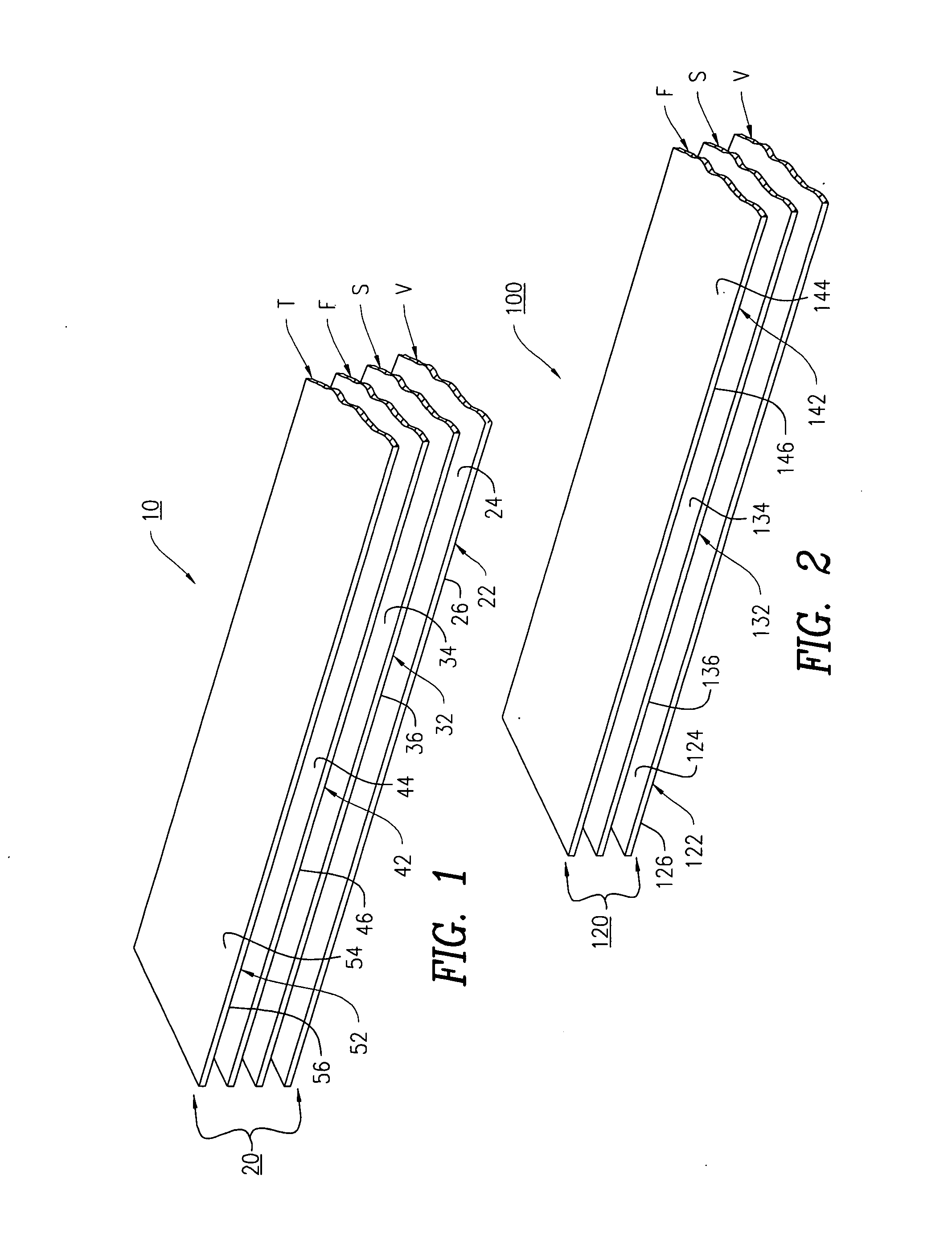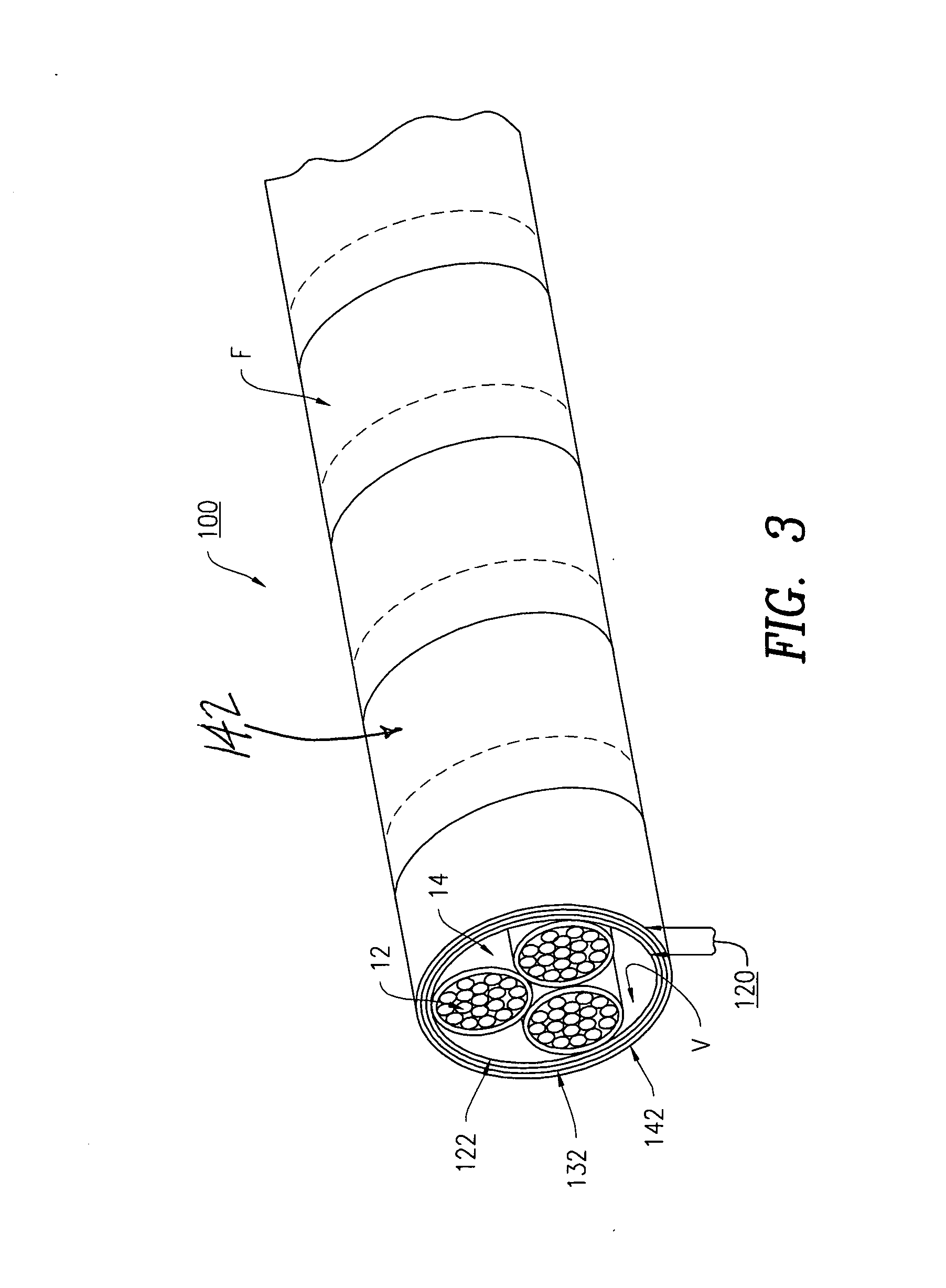Fire, heat and high voltage cable protection wrap
a protection wrap and high-voltage cable technology, applied in the field of wrap systems, can solve the problems of lenient acceptance criteria, scale test does not adequately model real-world conditions, 5343 fails to measure and limit parameters critical to the protection of installed cables
- Summary
- Abstract
- Description
- Claims
- Application Information
AI Technical Summary
Benefits of technology
Problems solved by technology
Method used
Image
Examples
example 1
[0065]The cable wrap system 10 as disclosed in claim 1 is constructed as follows:
[0066]1) High voltage arc resistant layer 22 is comprised of W.R. Grace Quelpyre Resin, approximately 0.040″ coating thickness.
[0067]2) Woven structural layer 32 is polyester having a thickness of 0.010″
[0068]3) Fire protection layer 42 is NoFire A18, manufactured by NoFire Technologies.
[0069]4) Topcoat environmental layer 52 is an elastomeric, acrylic coating.
[0070]The cable wrap system 10 is used to wrap a three-cable bundle 14 of high voltage cables 12 similar to the ones used by the Distribution Section of Consolidated Edison of New York (Con Ed) (See FIG. 4). The wrapped bundle is installed in a vertical burn apparatus similar to the type used to conduct ANSI / IEEE 383 Fire Tests. Test setup, test conditions, exposure, time and acceptance criteria are specified by the Standard.
[0071]Results of ANSI / IEEE 383 Fire Test:
[0072]1) No cable ignition or fire involvement for duration of the test (10 minutes...
example 2
[0076]The cable wrap system 10 of Example #1 is tested according to ASTM E162 for flame spread, smoke generation and ignition potential. The results of this test are: FSI—0, SDI—10, no ignition.
example # 3
Example #3
[0077]The cable wrap of Example #1 is tested according to ASTM E662 for smoke emission and toxic products of combustion using the Drager Tube Method, according to BSS 7239 Gas Analysis.
Results of smoke emission are:FlamingNon-FlamingDs @ 90 sec01Ds @ 4 min103.5Dm2424
Results of Gas Analysis (in parts per million):Gas (type):Non FlamingFlamingHydrochloric Acid (HCL)00Hydro cyanic Acid (HCN)00Hydrogen Fluoride (HF)00Nitrous Fumes (NO + NO2)2.55Carbon Monoxide (CO)7.527.5Sulfur Dioxide (SO2)00Phosgene (CL2CO)00
PUM
| Property | Measurement | Unit |
|---|---|---|
| Temperature | aaaaa | aaaaa |
| Temperature | aaaaa | aaaaa |
| Temperature | aaaaa | aaaaa |
Abstract
Description
Claims
Application Information
 Login to View More
Login to View More - R&D
- Intellectual Property
- Life Sciences
- Materials
- Tech Scout
- Unparalleled Data Quality
- Higher Quality Content
- 60% Fewer Hallucinations
Browse by: Latest US Patents, China's latest patents, Technical Efficacy Thesaurus, Application Domain, Technology Topic, Popular Technical Reports.
© 2025 PatSnap. All rights reserved.Legal|Privacy policy|Modern Slavery Act Transparency Statement|Sitemap|About US| Contact US: help@patsnap.com



